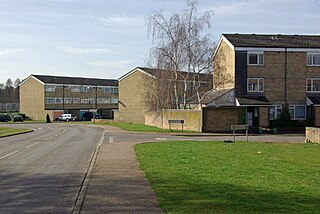Top Qs
Timeline
Chat
Perspective
London overspill
Mid 20th century population movements in South East England From Wikipedia, the free encyclopedia
Remove ads
London overspill communities were established as part of a government-led initiative to alleviate overcrowding in Greater London by relocating residents to other parts of England between the 1930s and 1970s. The earliest efforts focused on nearby areas in the South East, with the development of towns such as Harlow, Crawley, Basildon, and Stevenage. These initiatives were underpinned by the Greater London Plan of 1944, authored by Patrick Abercrombie, which proposed a ring of satellite towns beyond a newly defined Green Belt to decentralise population and industry.

From the 1950s, the scheme extended into East Anglia, where towns such as King's Lynn, Thetford, Haverhill, and Bury St Edmunds were expanded or redeveloped to accommodate Londoners. This regional inclusion aligned with the New Towns Act of 1946, which empowered the government to designate development areas and establish corporations to oversee their planning and growth. Peterborough, for instance, was designated a New Town in 1967 with a target population increase of 70,000.
During the 1960s and early 1970s, the programme moved into the East Midlands, particularly Northamptonshire, where towns like Northampton, Corby, and Wellingborough were developed along key transport corridors such as the M1 and A1. In its later stages, the policy reached the North West of England, with Burnley in Lancashire—over 200 miles from London—formally designated as an overspill town. This marked a shift from regional relief to a broader strategy of national population and industrial redistribution, largely implemented through the construction of council houses and the development of new towns.
Remove ads
Policy development
The policy was initiated in the 1930s, and started in earnest after the Second World War, as a reaction to the housing shortages caused by enemy bombing and large amounts of substandard housing in the capital. This policy existed until the late 1970s, reinforced by a widespread dislike of ribbon development. Started by the London County Council, the task was completed by its successor, the Greater London Council. In the 1960s, the Location of Offices Bureau dispersed office workers away from the capital.[1]
In 1960, the Greater London Plan proposed that over one million Londoners should be relocated from Inner London. The great majority of overspill families were relocated either to existing or new towns within south east England. As a short term expedient, viewed as regrettable, to meet an urgent need, "quasi-satellites" were created around the edge of Greater London, or close by, at South Oxhey, Debden and Harold Hill.[2]
Remove ads
List of new and expanded towns
Summarize
Perspective
In 1973, the following towns were listed, in Hansard,[3] as London overspill:
Remove ads
See also
- Overspill estate
- Niethrop and Bretch hill, Banbury
- Ruscote and Hardwick, Banbury
References
Wikiwand - on
Seamless Wikipedia browsing. On steroids.
Remove ads
